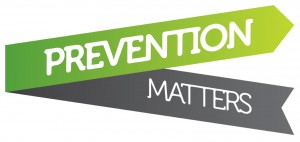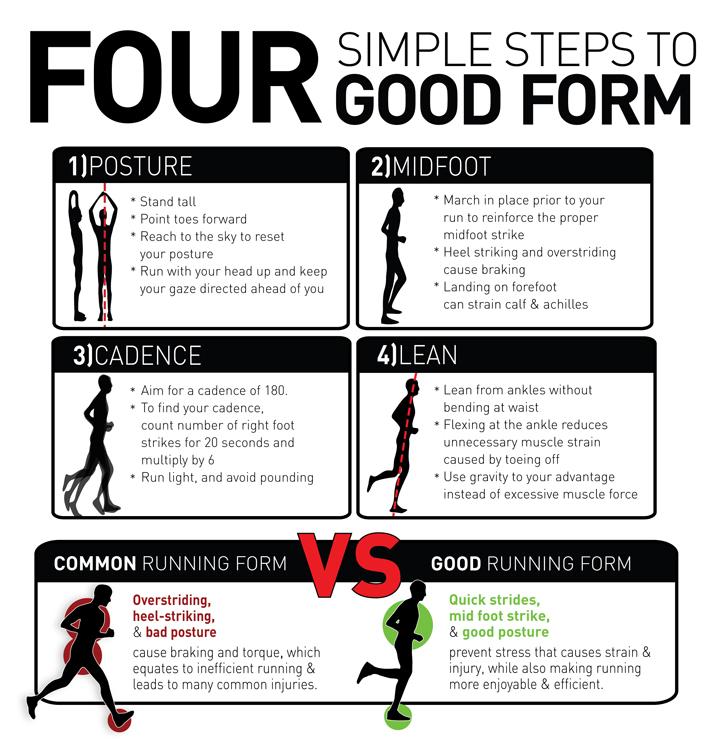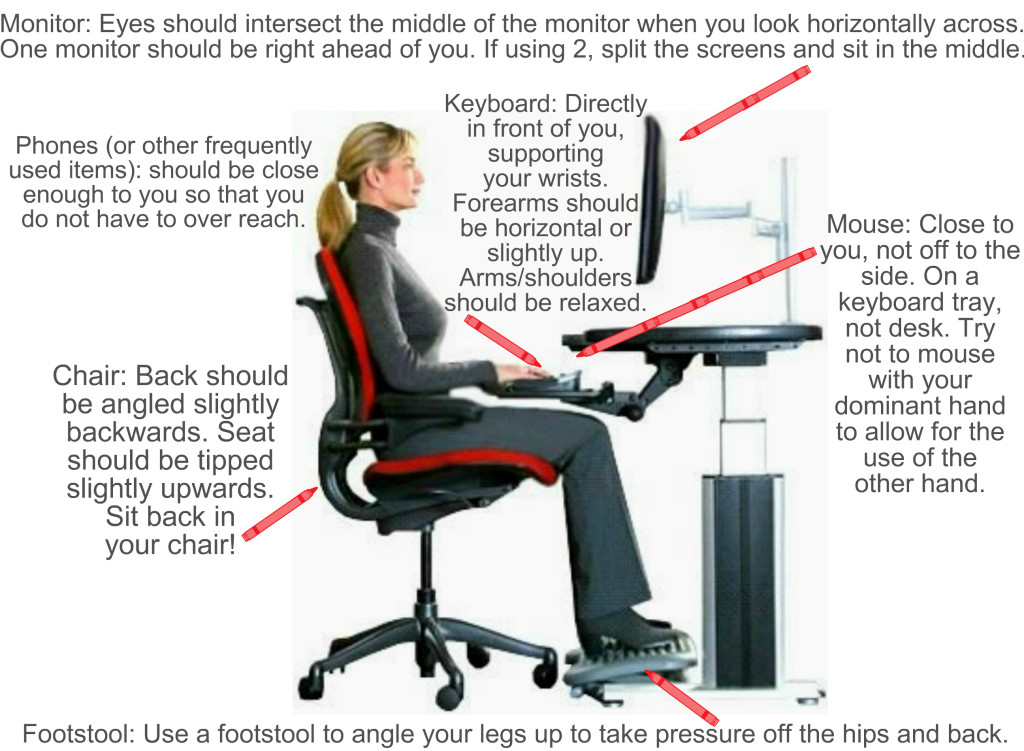As the saying goes, an ounce of prevention is worth a pound of cure. Back to Health offers a wide variety of services dedicated to the prevention of some common complaints. Some of the services we offer are detailed below.
Running form
The ideal running posture is such that a plum line could be dropped from the ear lobe down through the shoulders and through the hips to the ground. Proper running form should be used in order to prevent injuries.
Foot strike
Normal: Heel (outside)-to-toe runner – must have knees slightly bent, which minimizes the stress on the legs.
1. Midfoot runner – will stress muscles in the foot, kneecap, hip muscles, and joints in the lower back and buttock.
2. Toe runner – will cause foot pain, calf, shin, hip flexor, sacro-iliac joint problems and shoulder stiffness.
3. Heel runner- will strain hamstrings.
Hip alignment
Normal: Hips should be straight
1. Leaning forward – prone to fatigued lower back muscles, joint problems, problems with tight buttocks, overuse of neck, mid-back muscles and joints, can cause strained or fatigued calf muscles, and causes short, choppy stride.
Running base
Normal: Should be shoulder-width apart
1. Narrow base – more common in people who are bow-legged, flared hips, shortened adductor muscles and internal rotators of the hips, causing ankle, knee and hip problems.
Stride length
Normal: Slight bend in the back of the knee, foot plant should be under centre of gravity.
1. Increased stride length – body must decelerate on foot plant, strain on shock absorbers of the legs, and have a greater vertical lift which wastes energy.
2. Decreased stride length – causes toeing out and mid-foot striking, which enhances pronation of the foot and strain on the leg, hip rotators and back.
Shoulder carriage
Normal: The shoulders should be down and back.
1. Carried too high – common problem with most runners, cause neck, shoulder, upper back stiffness, shifts centre of gravity.
2. Rounded forward – have tendency to lean forward which changes where you land on the foot, limits maximum breathing capacity.
Head carriage
Normal: Head/neck should be relaxed; eyes should focus a few feet ahead of the area of the foot strike.
1. Looking down – causes centre of gravity to be shifted forward causing forward body lean, toe running.
Hill running
Uphill running – both stride length and knee lift are reduced slightly, must increase stride frequency.
Downhill running – avoid deceleration on foot strike, avoid leaning back, and use a heel toe plant. You should allow the momentum of your body to carry you down the hill faster. Overuse injuries to the knees and upper leg occur with downhill running.
Would you like Dr. Rodwin to check out your running form? E-mail her for an individual or group analysis.
Running Form ChecklistFOOT STRIKE: Normal/Neutral: _______ Heel- (outside of) -to-toe runner RUNNING BASE: Normal/Neutral: _______ Feet shoulder-width apart HIP ALIGNMENT: Normal/Neutral: _____Straight hip alignment STRIDE LENGTH: Normal/Neutral: ____ Mild bend in back of knee SHOULDER CARRIAGE: Normal/Neutral: _____ Shoulders down and back ELBOWS/ARMS: Normal/Neutral: _______In close to body HEAD CARRIAGE: Normal/Neutral:_____ Head/neck should be relaxed |
Ergonomics
Ergonomics is the science of fitting the workplace to the human beings who inhabit it. Nowadays, more people are working behind desks for prolonged periods of time, especially at computer workstations, which can create postural strain conditions such as those described in our Common Conditions section. The picture shows how people commonly sit – this can cause injuries to all parts of the body! Read on to change your habits and to learn how to prevent injuries. Watch a detailed video explaining proper workstation ergonomics here.
At Back to Health, our professional staff is available to perform workplace ergonomic assessments and deliver guest presentations on ergonomic topics such as:
- How to sit properly
- Lifting techniques
- How to fit workstations to their inhabitants, and,
- Stress management.
Workstation ChecklistThe examination and correction of work station ergonomics can reduce the occurrence of postural strain and result in happier, more productive staff. Send us an e-mail if you would like to arrange an ergonomics assessment or lecture from our staff. If you answer no to the questions below, you will need to fix this setup. Chair Terminal Keyboard Desk Laptops |
Especially for golfers
Do you golf? We do, so there’s a special place in our practice for golfers and related injuries. Although there may not be as many traumatic injuries on the links, overuse syndromes, tendonitis, bursitis, strains and sprains – just to mention a few – often aggravate the golfing population.
Recently, we attended a golf injury prevention clinic. The clinic focused on common problems both on and off the course that can potentially cause injury. The following are the most common injuries which result from mechanical problems in the swing. If you can identify with any of these problems, a golf lesson may help reduce your chance of injury. Another way to lessen injuries is to have a chiropractic evaluation, which will aid you in understanding any biomechanical problems you have in your body.
- Inadequate warm-up can cause muscle strain.
- Incorrect stance can cause knee ligament/knee cap damage annd leg/back strain.
- Excessive rotation of forearms/hands can cause golfer’s elbow, and forearm, hand and wrist pain.
- Improper posture or balance can cause low back/neck strain.
If you are injured and the pain persists for more than two days, see a doctor of chiropractic to screen for a more serious injury.
Special points of interest:
- The golf swing is not “bad” on the spine or any joint.
- Only .0001% of golfers ever shoot par.
- Chiropractors deal with golf-related injuries very effectively.
- The most common injuries in golf are back injuries. Most of these injuries are simply muscle, ligament, or joint strains that can be treated effectively if caught early.
Changing technique and equipment can help golfers with chronic (long-term) back pain play around with the injury – it will not help correct the problem though. Constant bending over causes extreme stress on the muscles and joints of the lower back. The use of newer and longer clubs can allow your body to remain closer to the upright position and help relieve stress on your back. The elbow is the most commonly injured area. Golfer’s elbow is an inflammation of the tendons that allow the elbow to flex (bend). Treatment consists of ice, rest, adjustments, soft tissue therapy, and stretching. The chiropractor will also suggest that you take stress off your forearm and elbow while playing, and you may have to use a elbow brace.





